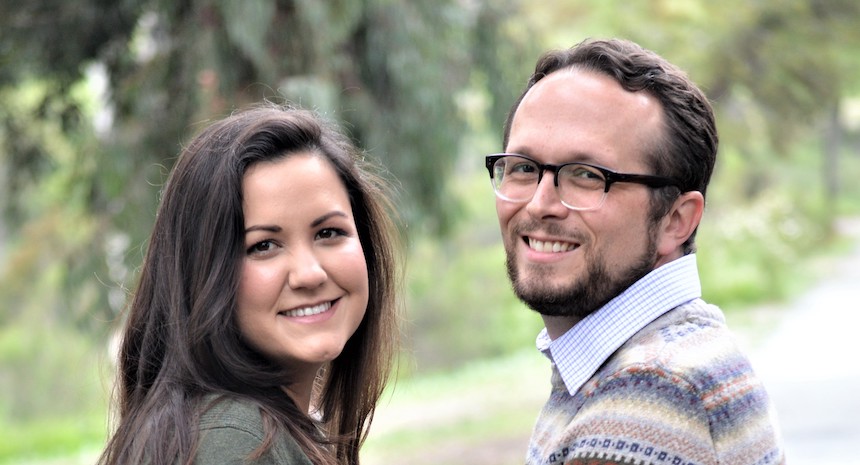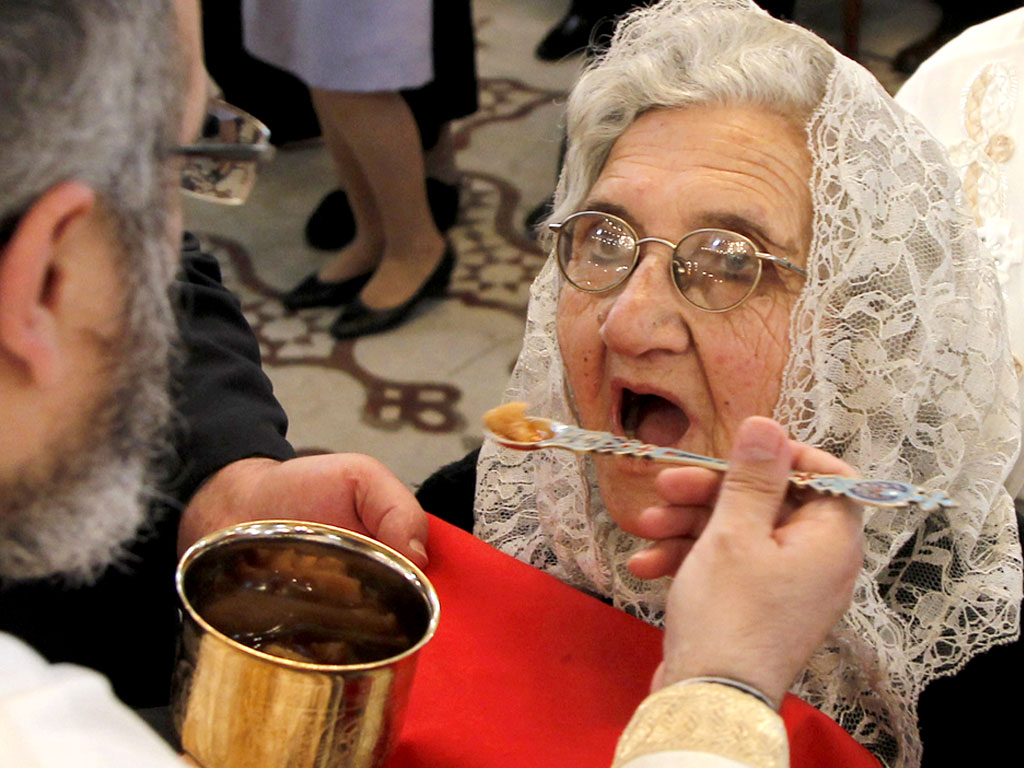Byzantine Wedding Primer


Some of those attending our wedding (or watching it on Facebook) may not be familiar with the Byzantine Catholic Church. The video below (and transcript which follows) provides a short explanation of what will happen during our wedding so that our guests may better understand the ceremony. We pray that we will all grow closer to each other and to the Lord through this celebration of our marriage.…
Catholic, but not Roman
The services of our Church are the common heritage of the Eastern Orthodox Churches and the Eastern Catholic Churches, such as our parish of Holy Angels Byzantine Catholic Church. These ceremonies come from the Church of Constantinople, rather than from the Church of Rome. They are another way of celebrating the Catholic Faith with a distinctly Eastern “feel”, which includes icons, crowns, chanting, and fans. Despite these differences, Byzantine Catholics are fully Catholic and our Bishops are in full communion with Francis, the Pope of Rome.

There are several forms of Byzantine worship and ours is Ruthenian. This is the Latin term for a people who live in Eastern Europe around the Carpathian Mountains, where our Parish finds its roots. The Liturgy itself, however, will all be conducted entirely in English.

It is the ancient custom of our Church not to use musical instruments. Each human voice is God’s special instrument and consequently, we sing the Liturgy. The melodies are from the ancient Carpathian plainchant tradition. The singing will be led by a Cantor, but all are encouraged to join in.

Historically, Christian churches did not contain pews. Our own parish only has seating around the edge of the church, but please feel free to make use of it at any time during the Liturgy.
What will happen?
Fr. James will meet us at the door of the church and then lead us to the tetrapod, a small table at the front, upon which usually rests an icon or the Book of the Holy Gospels.
The Betrothal
The Liturgy begins with a Betrothal service, which is a ceremony involving the receiving of our wedding rings. After we express our willingness and freedom to marry, a series of prayers and litanies then follow. The common response to petitions is “Lord have mercy.” You will notice that we will be singing this response throughout the service. Please note, “mercy” here does not mean a request for a reprieve from punishment, but is rather an appeal for God’s steadfast, unfailing, love.

Crowning In Marriage
Marie and I will then exchange vows, after which we will be joined together in marriage by the priest through the receiving of crowns:

The crowns are rich in meaning. Firstly, the husband and wife are seen to be the “king and queen” of their new family and domestic church. Secondly, they are crowned as a sign of their “martyrdom”. A martyr is someone who lays down his or her life for Christ as a witness to the Christian faith. The husband and wife offer their lives to each other and witness to their faith through their marriage, a sign of the union of Christ and the Church, as described by St. Paul in the Reading which will follow. The priest then blesses the marriage with the words: “O Lord, our God, crown them with glory and honor”.

The Liturgy of the Word
There are two readings from Scripture. The first is from the letter of St. Paul to the Ephesians and is chanted by the Cantor. The Cantor faces the Altar, since the Reading speaks of Christ. Afterwards, the Deacon chants the Gospel Reading, The Wedding at Cana. The Deacon faces the People since it is now Christ speaking to us.
Fr. James will then share his homily. At its conclusion, intercessory prayers will be made for those present, the Church and world. To each petition, the People once again respond with “Lord, have mercy”.
Common Cup and The Dance of Isaiah
We once again come to a couple of things in the Liturgy which are not found in a typical Western nuptial Mass…
After more prayers, a common cup of sweet wine is blessed and shared by the couple as a sign of their common life together, a sharing of joys and sorrows, successes and failures, hopes and fears.

Then, often holding up a cross, the Priest takes the couple by the hand and leads them three times around the tetrapod. Upon the tetrapod will be the Book of the Holy Gospels, symbolising the centrality of Christ in their married life together. Sometimes the priest will hold the Gospel book itself. While this is happening, the Cantor will be singing “Rejoice, O Isaiah!”

The Liturgy of the Eucharist
The Liturgy of the Eucharist begins with the singing of the hymn, “Let us who mystically represent the Cherubim …” Throughout this Liturgy, the Priest and the People face the Altar, addressing their prayers to God. The true seal of the marriage, the communion of persons, is the receiving of Holy Communion – the Body and Blood of the Lord – by the husband and wife.

All Byzantine and Roman Catholics in a state of grace are invited to come receive the Eucharist. Please approach Fr. James opening your mouth widely but not extending your tongue. Communicants need say nothing. The Body and Blood will be placed directly into your mouth using a single-use spoon.

Dismissal
The service will conclude with a prayer for the peace, health, happiness and salvation of the newly-weds.
~ ~ ~
…and there you have it! This is what you can expect to experience on our wedding day, whether in person, or by watching the livestream. We’ll see you then!
God grant to both of you many happy and blessed years!
Thanks 🙂
Thanks you so much. My son will be married in July at our Ruthenian Byzantine church. It’s our first wedding, after switching rites. You answered so many of my questions. May God great you many blessed years, in peace, health and happiness!
You’re very welcome! Congratulations!